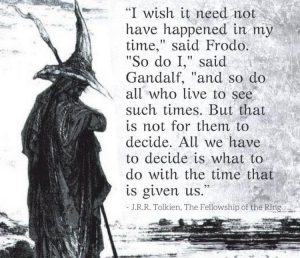April Commentary: GT Learners and a Rising Tide
Several months ago I wrote on GT families confronting the “Now what?” Apparently it’s a dangerous question, one that invites a completely different round of reflection now that families and educators alike are sheltering at home to reduce the spread of COVID19.
In between packing for travel and checking related items off my list (we usually stay local for Spring Break — of course this would be the year we switch it up), I was laying preparations for a March MCGT CHAT night so they would be ready to go as soon as we returned. I also anticipated making a legislative update about policy proposals in the Minnesota legislature (a different set than the funding proposal from last Summer) meant to strengthen GT education services.
During our travel I watched the rising tide arrive with a stiff wind on Dungeness Spit, well aware by that point that we would be returning home to the unknown and unpredictable. Rough waters demand that we call upon every tool in our emotional stores and every scrap of resilience; to pull from life lessons and skills that we may have considered dormant; to seek gratitude for small things that previously went unnoticed; to cultivate patience, creative thinking, and a sense of calm amid swirling uncertainty.
 These are tough things to do. They don’t come naturally to everyone. Swirling uncertainty can make many things have sharp edges or feel more pronounced. Health and financial concerns. Major changes to sleep, exercise, or activity routines. Falling into the traps of unhelpful habits or relationship patterns. Hours and days starting to bleed into one another. Layer on the worry of being a kid looking to adults for reassurance… or the worry of adults trying to provide it, trying to figure out where it’s going to come from in the first place, trying to help friends and loved ones who are at risk, trying to confront what’s right in front of us in this moment as a first responder or someone doing the work of essential services.
These are tough things to do. They don’t come naturally to everyone. Swirling uncertainty can make many things have sharp edges or feel more pronounced. Health and financial concerns. Major changes to sleep, exercise, or activity routines. Falling into the traps of unhelpful habits or relationship patterns. Hours and days starting to bleed into one another. Layer on the worry of being a kid looking to adults for reassurance… or the worry of adults trying to provide it, trying to figure out where it’s going to come from in the first place, trying to help friends and loved ones who are at risk, trying to confront what’s right in front of us in this moment as a first responder or someone doing the work of essential services.
Now layer on the assorted intensities that often accompany giftedness. The relentless drumbeat to know why, when, or how. The drive to find intellectual peers. At home school lessons may not keep kids and teens for very long, especially if assignments emphasize subject matter standards they already know or can master quickly. Hours of being left to their own devices (figuratively and literally) can inspire creativity… or distractions. Home life factors — relationships, family and cultural values, access to resources — also make tremendous difference.
In years of volunteering in local classrooms and with this chapter, I’ve gotten to know many GT learners in this community, plus your families and teachers. Every one of you are in my thoughts, as are younger kids who are at an earlier point of figuring out this whole “GT thing” and what it means. You were at the heart of every link, every decision about what should appear in our two March newsletters:
- Newsletter Part I: Focus on Resilience, Logistics & Local Support
- Newsletter Part II: What are we going to do today, Brain? Finding the Formula for Learning at Home
That’s a snapshot of what I continue to chew on as household tasks morph into one another. It’s on rotation with following the news, monitoring how quickly the snacks disappear, revisiting what should be on the list of things to track down or the list of projects to take on, and allocating energy to be of purposeful and relevant use.
 Lately, much of my classroom volunteering is in the library, which is why the kids and teachers I’ve worked with most closely know that I especially love Middle Grade books. To my mind, it’s where all the magic takes place. Middle Grade books feature adventures where kids have to solve the problems in front of them, partly because they realize that the grown ups don’t have all the answers.
Lately, much of my classroom volunteering is in the library, which is why the kids and teachers I’ve worked with most closely know that I especially love Middle Grade books. To my mind, it’s where all the magic takes place. Middle Grade books feature adventures where kids have to solve the problems in front of them, partly because they realize that the grown ups don’t have all the answers.
Kids in Middle Grade books speak their minds, reveal larger truths, decide what matters most, and get to put their imaginations to work. Silliness and laughter are perfectly acceptable. Growth and self-discovery are front and center.
All of that points to why I printed and tacked that Tolkein quote to our refrigerator as “shelter at home” began. People reveal who they are in adversity. There is tremendous opportunity for creativity. New blooms appear, often in unexpected ways. Stories like The Fellowship of the Ring arose out of difficult times. Choose your own adventures. Look after each other. Find your wisdom.
 Before I wrap this up, a reminder that today, April 2, is World Autism Awareness Day. Our 2e and special ed learners, including kids on the spectrum, have a host of distinct needs, all of which are in upheaval as a result of global, national, and local changes well out of their control. We each are facing this rising tide of uncertainty; they have been thrown headlong into re-envisioning their whole world and no doubt are missing existing networks of support.
Before I wrap this up, a reminder that today, April 2, is World Autism Awareness Day. Our 2e and special ed learners, including kids on the spectrum, have a host of distinct needs, all of which are in upheaval as a result of global, national, and local changes well out of their control. We each are facing this rising tide of uncertainty; they have been thrown headlong into re-envisioning their whole world and no doubt are missing existing networks of support.
We recognize Minnesota kids and adults who are on the autism spectrum, and invite everyone to support local neurodiverse learners. Many thanks to 2e news for putting together this great list of resources especially for 2e families and educators.
Put our newsletter resources to excellent use — including the MCGT Facebook Live sessions. Know you can reach St. Croix Valley Gifted with questions and specific requests. In the meantime, we will reach out to current members to ask how you’re doing and what we can do for you as the local MCGT chapter while Minnesotans continue to shelter at home and flatten the curve.
– Guest commentator Margaret Thomas is current chapter president of St. Croix Valley Gifted



